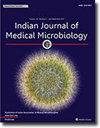An evaluation of antibiotic prescription pattern and drug rationality analysis among outpatients at public health setting, India
IF 1.4
4区 医学
Q4 IMMUNOLOGY
引用次数: 0
Abstract
Background
Antibiotic resistance (AMR) is a significant worldwide health problem, with inappropriate antibiotic prescription being a major contributing factor. Prudent antibiotic use is essential for enhancing health outcomes and reducing AMR. This study assesses antibiotic prescribing practices and their logic in a public community health facility catering to 12,900 urban and rural populations in North India.
Methods
Cross-sectional research was performed from August 2021 to August 2022, examining 1219 outpatient antibiotic prescriptions. The data encompassed medication kind, dose, duration, adherence to therapeutic criteria, and rationale evaluated by ID specialists and clinical pharmacologists. The evaluation was conducted in accordance with standard procedures, including those from NCDC and PGIMER. Demographics, antibiotic classifications, WHO AWaRe categories, diagnoses, and compliance with the essential drug list (EDL) were evaluated.
Results
The results indicated that 45.9 % of prescriptions were for males and 54 % for females, predominantly involving individuals aged 20–40 years. Amoxicillin + clavulanic acid (27.2 %) was the most often given antibiotic, followed by metronidazole (13.4 %) and azithromycin (10.3 %). The WHO AWaRe categorization revealed that 49.7 % of antibiotics were categorized as “Access,” 27.3 % as “Watch,” and none as “Reserve.” An examination of rationality indicated that 57 % of urinary tract infection prescriptions were justified, but just 29 % of respiratory tract infection prescriptions were deemed logical. Diarrhea and respiratory tract infections were recognized as primary targets for minimizing superfluous antibiotic consumption.
Conclusion
The research underscores the necessity for enhanced antibiotic prescription protocols in outpatient environments. Specialized education for healthcare professionals, improved prescription oversight, and compliance with evidence-based protocols are essential for fostering judicious antibiotic utilization and addressing AMR.
求助全文
约1分钟内获得全文
求助全文
来源期刊

Indian Journal of Medical Microbiology
IMMUNOLOGY-
CiteScore
2.20
自引率
0.00%
发文量
154
审稿时长
73 days
期刊介绍:
Manuscripts of high standard in the form of original research, multicentric studies, meta analysis, are accepted. Current reports can be submitted as brief communications. Case reports must include review of current literature, clinical details, outcome and follow up. Letters to the editor must be a comment on or pertain to a manuscript already published in the IJMM or in relation to preliminary communication of a larger study.
Review articles, Special Articles or Guest Editorials are accepted on invitation.
 求助内容:
求助内容: 应助结果提醒方式:
应助结果提醒方式:


